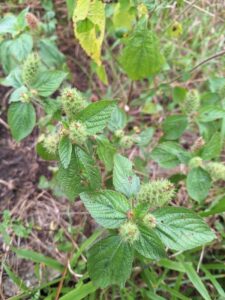How to Propagate Acalypha alopecuroidea

Propagating Acalypha alopecuroidea: A Gardener’s Guide to the Foxtail Acalypha
Acalypha alopecuroidea, commonly known as the foxtail acalypha, is a captivating ornamental plant prized for its striking, dense, and brightly colored foxtail-like inflorescences. These vibrant flower spikes, ranging from shades of red, pink, to green, add a unique textural and colorful element to gardens, making it a favorite among plant enthusiasts. Its relatively compact size and adaptability to various growing conditions further contribute to its popularity. However, propagating this beautiful plant presents certain challenges, making success all the more rewarding. This article explores various propagation methods, outlining their successes and pitfalls.
Seed Germination:
Currently, there are no known reliable methods for seed germination propagation of Acalypha alopecuroidea. While the plant produces seeds, their germination rate is reportedly extremely low, even under ideal conditions. Further research is needed to determine if specific pre-treatments or germination techniques could improve success.
Cuttings:
Cuttings represent the most successful and commonly used method for propagating Acalypha alopecuroidea.
Challenges: Rooting can be slow and inconsistent. The success rate depends heavily on factors such as the age and health of the parent plant, the timing of the cutting, and the environmental conditions.
Practical Tips: Take semi-hardwood cuttings (partially matured shoots) in spring or early summer. Use a sharp, clean blade to prevent the spread of disease. Remove lower leaves, dipping the cut ends in rooting hormone before planting in a well-draining propagating mix (e.g., a mix of perlite and peat moss). Maintain high humidity (e.g., using a humidity dome) and consistent moisture but avoid overwatering. A bottom heat mat can also accelerate root development.
Rewards: Cuttings offer a relatively straightforward method to generate genetically identical plants, ensuring the preservation of desirable traits from the parent plant. This is highly valuable for maintaining a particular color or form within a collection.
Division:
Division of established Acalypha alopecuroidea plants is a possibility, but it’s not always straightforward.
Challenges: The plant’s root system may not readily lend itself to division, potentially causing damage to the plant and resulting in low success rates. The plant also does not always readily produce multiple stems suitable for division.
Practical Tips: If attempting division, carefully dig up the plant and gently separate the root ball into smaller sections, ensuring each section has a good number of healthy roots and stems. Replant immediately and provide consistent watering.
Rewards: Division can be a quick way to increase plant numbers if the plant has already developed a sizable, divisible root system.
Tissue Culture:
Tissue culture offers a high-potential, albeit complex, method for propagating Acalypha alopecuroidea.
Challenges: Tissue culture requires specialized facilities, equipment, and expertise. Sterile conditions are crucial to prevent contamination. Development of reliable protocols may require extensive experimentation.
Practical Tips: This method is best left to experienced tissue culture professionals or laboratories. Success depends on the optimization of media composition, growth hormones, and sterile procedures.
Rewards: Tissue culture allows for mass propagation of genetically identical plants, offering opportunities for large-scale commercial production and the preservation of rare or valuable cultivars.
Conclusion:
Propagating Acalypha alopecuroidea presents unique challenges across various methods. While seed germination is unreliable, cuttings offer a relatively accessible and rewarding route to success. Division is possible but with limitations, and tissue culture remains a more advanced, high-potential option. The satisfaction derived from successfully propagating this beautiful plant, despite the hurdles, is undeniable. Patience, careful attention to detail, and a willingness to experiment are key to success. For beginners, cuttings provide the most manageable entry point into the world of foxtail acalypha propagation, opening the door to enjoying the vibrant beauty of this unique plant in your own garden. Don’t be discouraged by setbacks – every attempt, even an unsuccessful one, brings you closer to mastering this rewarding horticultural pursuit.